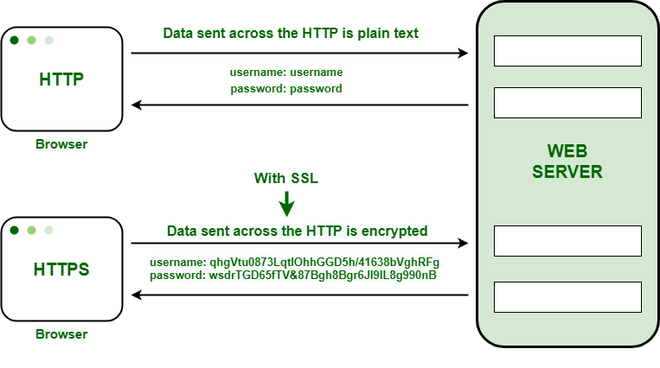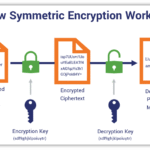In the vast and ever-evolving realm of web security, the saga of HTTPS prior to the advent of SSL presents a fascinating tableau fraught with intrigue and revelation. While contemporary conversations often orbit around the underlying protocols that secure our digital communications, there exists a historical narrative that sheds light on the evolution of secure web transfer protocols. This exploration unveils not merely the technical undertakings of bygone eras, but also a deeper appreciation for the motivations that fueled the continuous quest for a safer internet.
The early days of the World Wide Web were characterized by an alarming lack of privacy and security. As websites began proliferating, so did concerns about the interception of sensitive information during data transmission. This burgeoning apprehension catalyzed the need for a method to safeguard communications, creating the groundwork for what would ultimately evolve into HTTPS. Yet, prior to the development of SSL (Secure Sockets Layer), the groundwork for secure communications was laid with more rudimentary protocols.
Initially, the introduction of the Hypertext Transfer Protocol (HTTP) established a foundation for data exchange on the internet. However, HTTP’s plain text format allowed data to be transmitted unencrypted, rendering it vulnerable to eavesdroppers and malicious actors. During this era, various entities began recognizing the crucial necessity for enhanced security mechanisms. Hence emerged protocols like the Secure Hypertext Transfer Protocol (S-HTTP), which attempted to add security features directly onto HTTP, providing an initial framework to secure transactions.
Unlike HTTPS, which employs SSL/TLS to encrypt data, S-HTTP was more of an adjunct to the original HTTP protocol. It permitted individual transactions to be encrypted but did so in a manner that lacked uniformity and broad adoption. This led to a fragmented landscape wherein various implementations could be observed, ultimately complicating the overall system and limiting its effectiveness against the escalating tide of security threats.
In analyzing this phase of web security, one can observe a burgeoning recognition of the implications of privacy. Businesses and users started to demand assurance that their transactions—and by extension, their very identities—remained shielded from prying eyes. Yet, the complexity and limited scope of S-HTTP highlighted the challenges faced by early web developers. It served as a mirror reflecting the larger societal issues concerning trust in digital platforms; an issue that remains relevant today.
Another interesting aspect of this historical period is the role played by academia and research in shaping early security protocols. Scholars and engineers began investigating encryption algorithms and other security measures to address the glaring vulnerabilities present in online communications. Some notable initiatives from this era included discussions around secure communication standards, which ultimately led to the evolution of robust encryption techniques.
Despite the strides made during this period, it soon became evident that a comprehensive, cohesive security protocol was necessary to be widely implemented across the web. In 1994, the launch of Netscape Navigator heralded a paradigm shift, as it incorporated SSL into its framework, effectively standardizing secure transactions on the internet. This watershed moment marked the genesis of HTTPS as we know it today, bridging the gap between unencrypted communication and the secure web environment users now take for granted.
The genesis of SSL was not merely a technical response, but rather a profound reaction to the myriad of security threats that were proliferating in tandem with the rise of the internet. SSL provided a means of authenticating the identity of websites, effectively assuring users that they were interacting with legitimate entities. The implications of such developments extended beyond mere technical functionality; they reshaped the relationship between users and the internet. Trust became a pivotal component in the web ecosystem, necessitating robust security measures.
Moreover, the introduction of SSL encapsulated a zeitgeist of innovation and foresight. The need for a secure framework underscored an acute awareness of the interconnectedness of digital commerce and personal privacy. As e-commerce began flourishing, businesses recognized that without trust, user engagement and transaction volume would suffer substantially. Accordingly, SSL became more than just a layer of protection; it became a critical enabler of commercial endeavors in the digital landscape.
Transitioning from S-HTTP to SSL underscored the importance of user experience in enhancing security measures. The clunky nature of adopting multiple protocols impinged upon the seamlessness expected by users, driving the push toward a singular solution. Furthermore, the deployment of SSL/TLS allowed for transparent security that could function behind the scenes, making it easier for users to engage without necessarily understanding the complexities of encryption.
Today’s HTTPS, fortified by SSL/TLS, rests upon the foundational struggles and achievements of its predecessors. Its encryptive prowess effectively guards against data breaches and man-in-the-middle attacks, standing as a bulwark for online privacy. Yet, as we gaze back at this facet of web security history, it becomes apparent that the evolution of HTTPS embodies more than just technological progress. It reveals a microcosm of human desires for safety, privacy, and trust within a burgeoning digital ecosystem.
In conclusion, the journey of HTTPS prior to SSL illuminates not just the technical challenges of securing online communications but also reflects deeper societal values and a shared desire for security and trust in the digital age. The narrative of early web security, which flirted with the potential of S-HTTP, underscores a fundamental truth: the evolution of web protocols is intrinsically linked to the human experience of the internet. As we continue to navigate an increasingly complex digital landscape, understanding these historical dynamics provides invaluable insight into the ongoing quest for secure communication in our interconnected world.









Leave a Comment